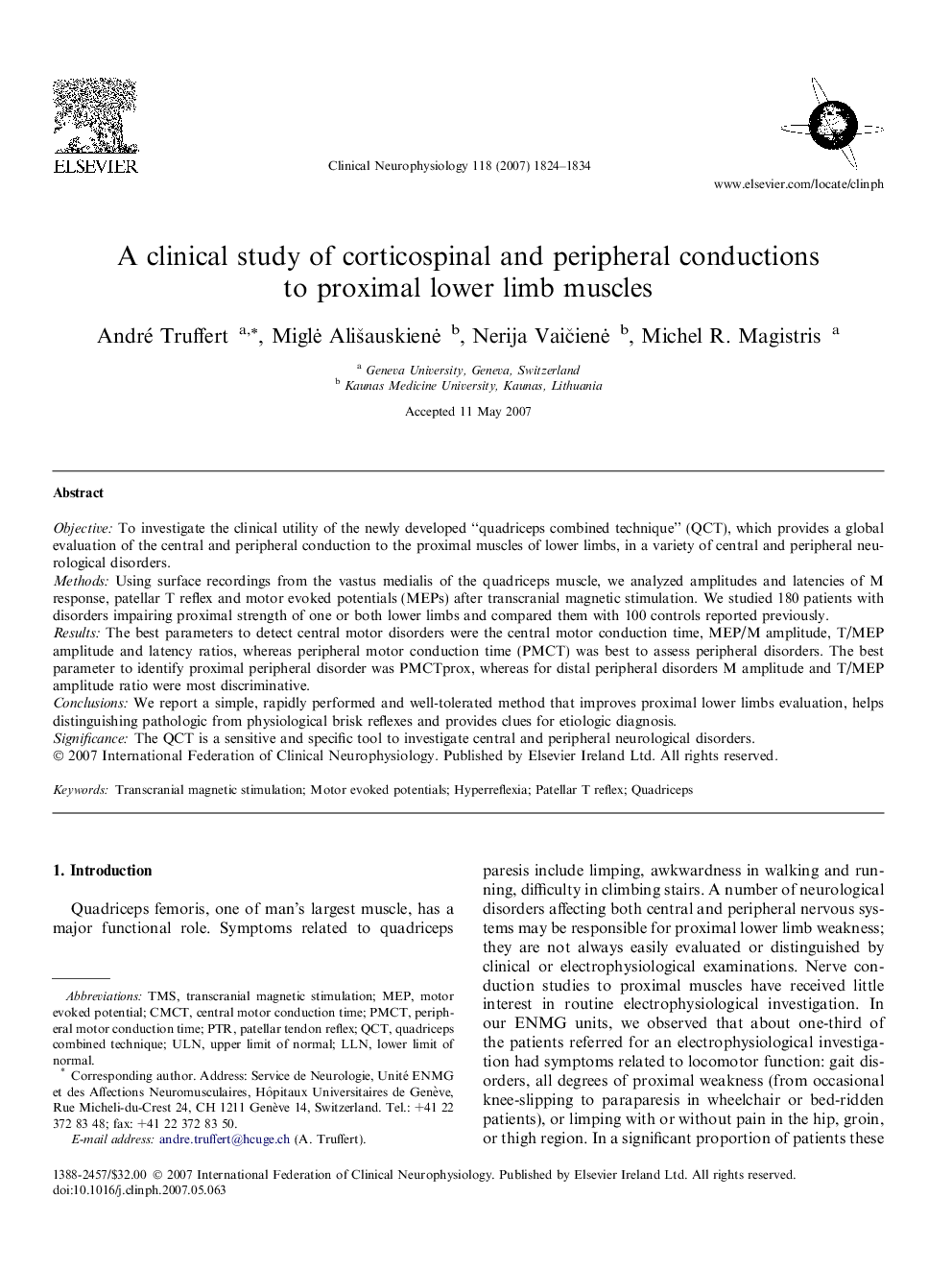| Article ID | Journal | Published Year | Pages | File Type |
|---|---|---|---|---|
| 3047790 | Clinical Neurophysiology | 2007 | 11 Pages |
ObjectiveTo investigate the clinical utility of the newly developed “quadriceps combined technique” (QCT), which provides a global evaluation of the central and peripheral conduction to the proximal muscles of lower limbs, in a variety of central and peripheral neurological disorders.MethodsUsing surface recordings from the vastus medialis of the quadriceps muscle, we analyzed amplitudes and latencies of M response, patellar T reflex and motor evoked potentials (MEPs) after transcranial magnetic stimulation. We studied 180 patients with disorders impairing proximal strength of one or both lower limbs and compared them with 100 controls reported previously.ResultsThe best parameters to detect central motor disorders were the central motor conduction time, MEP/M amplitude, T/MEP amplitude and latency ratios, whereas peripheral motor conduction time (PMCT) was best to assess peripheral disorders. The best parameter to identify proximal peripheral disorder was PMCTprox, whereas for distal peripheral disorders M amplitude and T/MEP amplitude ratio were most discriminative.ConclusionsWe report a simple, rapidly performed and well-tolerated method that improves proximal lower limbs evaluation, helps distinguishing pathologic from physiological brisk reflexes and provides clues for etiologic diagnosis.SignificanceThe QCT is a sensitive and specific tool to investigate central and peripheral neurological disorders.
